The Greatest (Mock) Draft in History
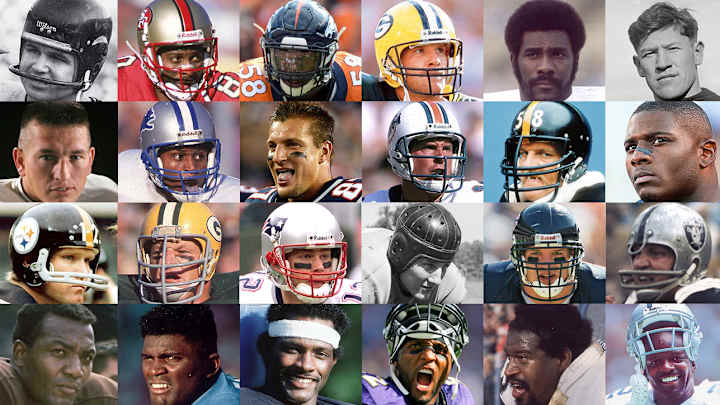
How would you go about building an NFL team if you could draw from a pool of every player in football history? How would Tom Brady, J.J. Watt and Adrian Peterson stack up against the likes of Johnny Unitas, Joe Greene and Jim Brown? Do you go heavy on defense early, knowing you might get an all-time QB down the road, or do you jump on the passer of your dreams? And, most compellingly, who would go No. 1 in a hypothetical draft of all-time players?
The MMQB set about answering these questions with an intriguing project. This spring we assembled a 12-man panel of personnel experts, football historians and longtime writers to stage The MMQB All-Time NFL Draft—12 “GMs,” constructing a squad—offense, defense and special teams—from the roster of every player in pro football history.
THE RULES
• Each team would select 25 players and one coach. Twenty-five rounds, plus a round (in reverse draft order) for the coaches.
• Each team would field 11 players on offense and 11 on defense, plus a placekicker and a punter. In addition, (at least) one wild-card player would be selected.
• Each team must draft one QB, two running backs, two wide receivers, one tight end, two tackles, two guards and a center.
• The defense could be either a 4-3 or a 3-4, plus two cornerbacks and two safeties.
• If a GM selected a player who played two positions (for instance, center and linebacker, or kicker and punter), the GM could deploy that player at both spots, allowing for another wild-card pick.
• Conceptually, the process would be era-neutral. The assumption was that players who excelled in one era would be equally good in any other.
• The primary purpose was to have fun.
THE PARTICIPANTS (IN DRAFT ORDER)
1. Joel Bussert. Former longtime head of the NFL’s player personnel department.
2. Ron Wolf. Hall of Fame NFL executive.
3. Rick Gosselin. Longtime Dallas Morning News football writer and Hall of Fame voter.
4. Dan Fouts. Hall of Fame quarterback and Hall of Fame voter.
5. John Turney. Highly respected football historian from Pro Football Journal.
6. Gil Brandt. Pioneering scout and personnel executive.
7. Bob McGinn. Packers beat writer for 38 seasons.
8. Joe Horrigan. Vice president of the Pro Football Hall of Fame.
9. Peter King. Editor in chief of The MMQB and Hall of Fame voter.
10. Bill Polian. Six-time NFL executive of the year and Pro Football Hall of Famer.
11. John Wooten. Longtime player, NFL scout and director of The Fritz Pollard Alliance.
12. Ernie Accorsi. Former GM of the Colts, Browns and Giants.
The results of the draft will be unveiled on Monday, July 17, in Peter King’s Monday Morning Quarterback column, and in a special All-Time Draft hub. But as with every draft, we figured we’d introduce the concept with a mock, and enlisted SI draft guru Chris Burke to contemplate the idea and predict how the first round would play out. Burke did not know the results of the draft, and was given only the names of the participants and the draft order.
CHRIS BURKE’S ALL-TIME DRAFT MOCK FIRST-ROUND
1. Team Bussert: Tom Brady, QB
Frankly, every single pick in this first round could be a quarterback. If one really were to go build a team from scratch, starting with all available options on the table, why wouldn’t a QB be the focus? Bussert was among the architects of the current illegal-contact rule, which helped open up NFL offenses starting in the ’90s, so he no doubt recognizes the value of having an elite player under center.
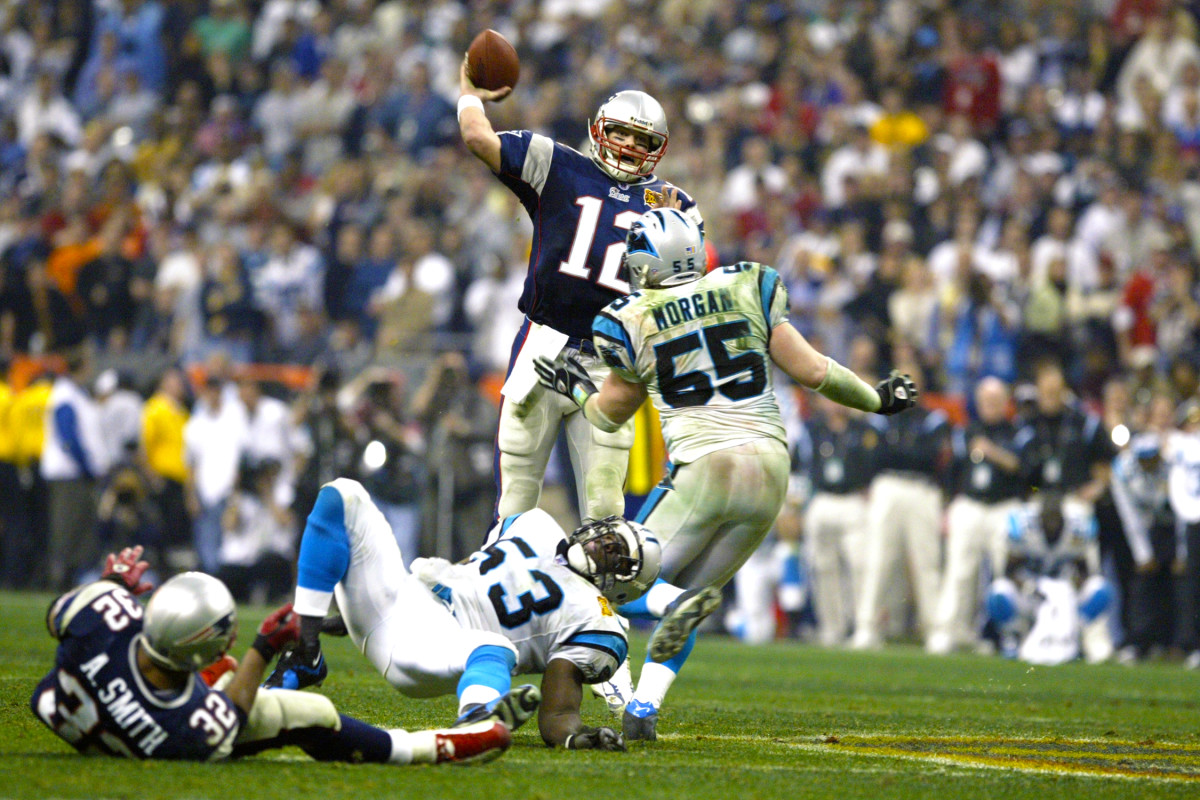
The debate, of course, will be over which quarterback deserves to come off the board first. I have a feeling this draft will pay proper homage to the legends of yore, like Otto Graham and Sammy Baugh, but I’d argue that this should come down to Tom Brady vs. Joe Montana. Brady’s remarkable rally in Super Bowl 51 cemented his place at the top.
2. Team Wolf: Reggie White, DE
Wolf joined the Packers’ front office in 1991. Two years later he nabbed White in a stunning free-agency coup. The pair reunites here, with “the Minister of Defense” serving as a (fictional) franchise building block. Elite pass rushers always are in demand, which means there ought to be a run on them rather early—Bruce Smith, Michael Straham, Mark Gastineau, etc. Wolf’s squad gets the jump.
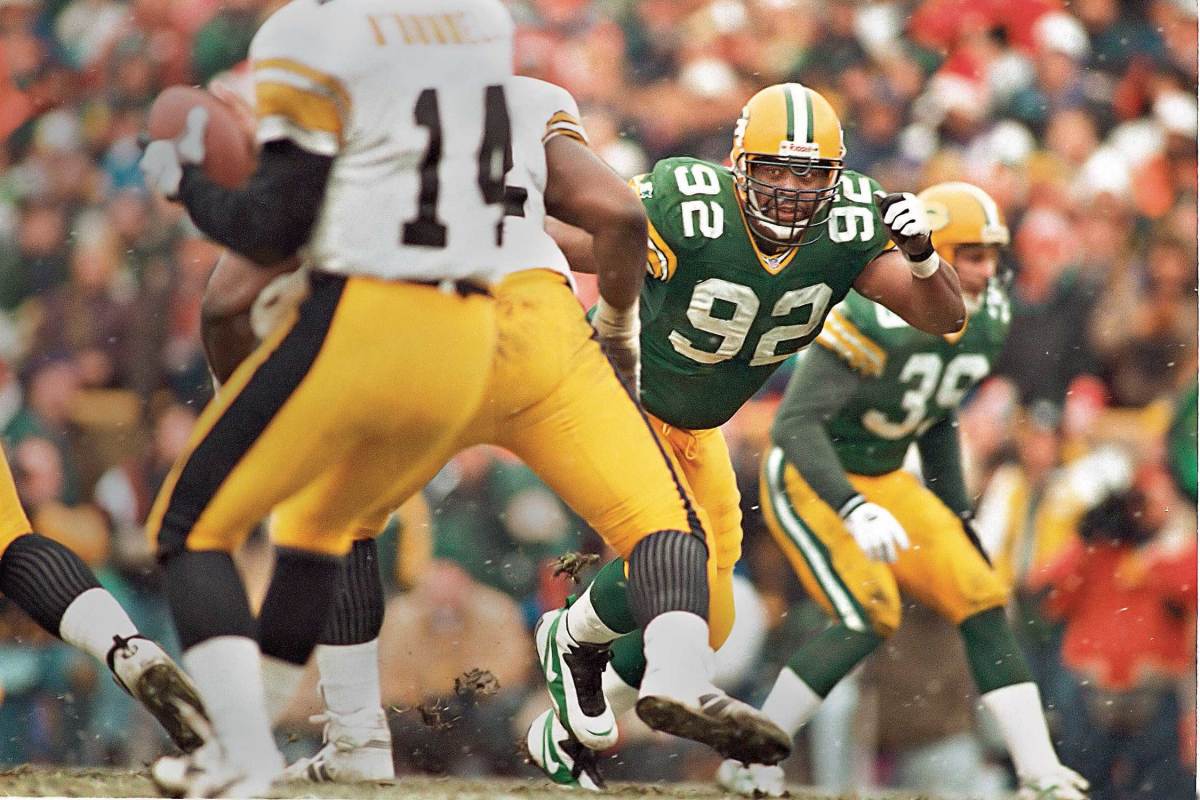
3. Team Gosselin: Anthony Muñoz, T
Covering all the premises of roster construction so far. Quarterback, pass rusher and offensive tackle long have been premier, coveted positions in the draft. Whichever QB Gosselin’s team lands in later rounds, he’d be protected for the long haul—Muñoz played in 164 of a possible 168 games from 1980 (his rookie season) through 1991, securing nine First Team All-Pro nods and 11 consecutive Pro Bowl berths.
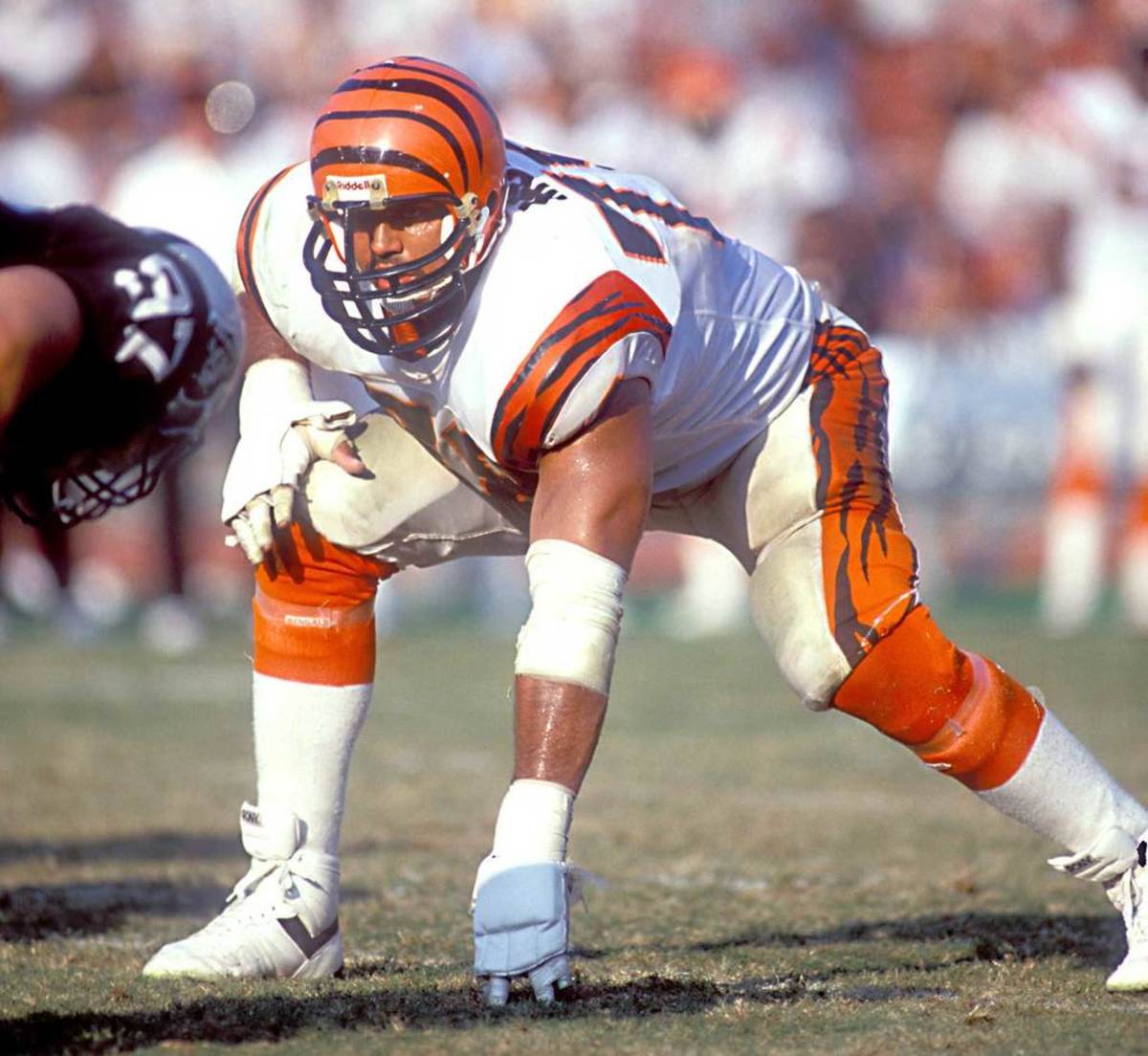
4. Team Fouts: Joe Montana, QB
Fouts is a Hall of Fame quarterback himself, so he should appreciate the importance of nailing down that position. He also witnessed first-hand just how difficult it is to win in the postseason—Fouts was 3-4 for his career in the playoffs. Montana was 4-0 in the Super Bowl alone, as arguably the most clutch quarterback of all time.
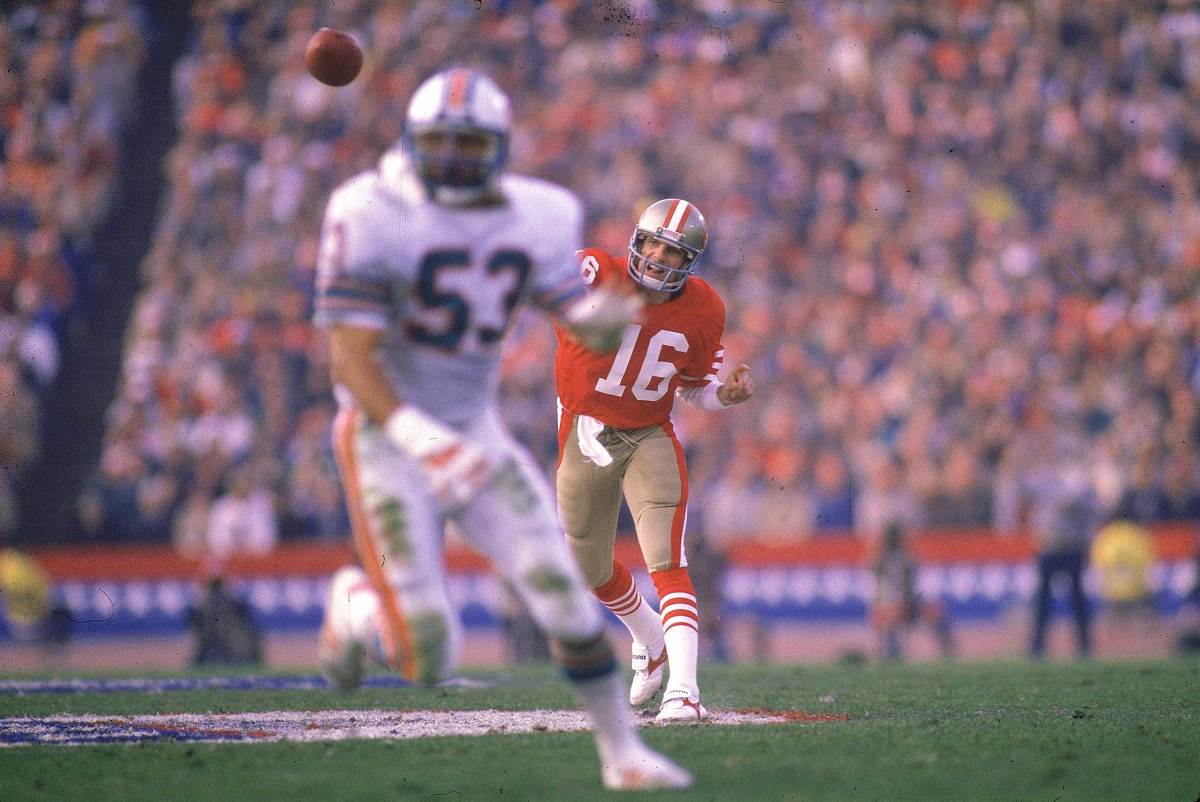
5. Team Turney: Lawrence Taylor, LB
Because the NFL did not begin counting sacks as an official stat until 1982, historian Turney spent untold amounts of time researching pass-rushing production from ’81 on back. It stands to reason, then, that he would put an emphasis on finding a dominant talent off the edge. Officially, the dynamic Taylor finished his career with 132.5 sacks. Unofficially, counting the 9.5 with which he’s credited for his 1981 work, he had 142.
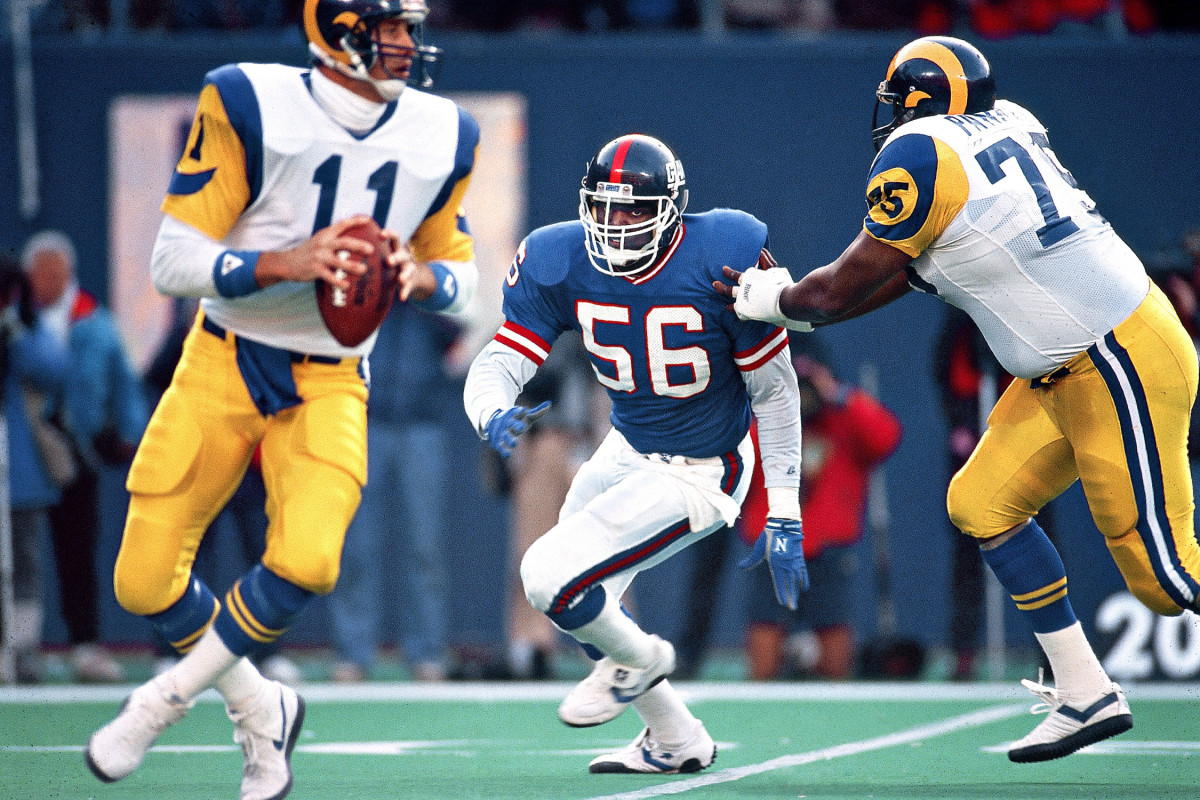
6. Team Brandt: Jim Brown, RB
Has Brandt been tipping his hand over the past few weeks? Over on NFL.com, he has released his rankings of the all-time greatest at each postion group. His top QB, Brady, is off the board. (He has Peyton Manning ranked No. 2, just ahead of Montana.) His No. 1 tackle, Jim Parker, remains, but let’s instead turn the focus on the backfield. Brandt’s team can begin laying throwback, ground-and-pound roots by taking Brown at No. 6.
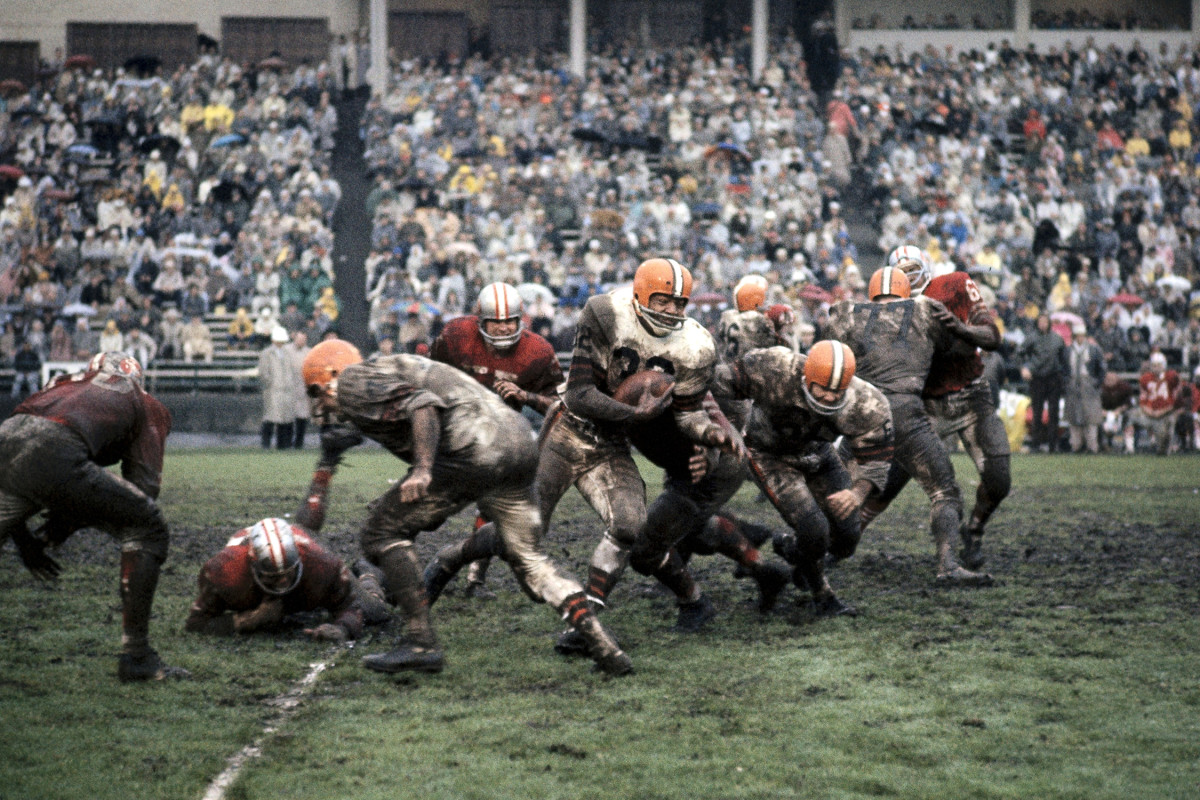
7. Team McGinn: Ronnie Lott, S
Lott was not the first defensive back to bounce between the cornerback and safety positions, but his game still was ahead of its time in some respects. Modern NFL front offices trip over themselves seeking DBs with even a fraction of the versatility Lott offered. Teams need a “quarterback” on defense almost as much as they need an actual QB on offense, and Lott can serve that role for Team McGinn.
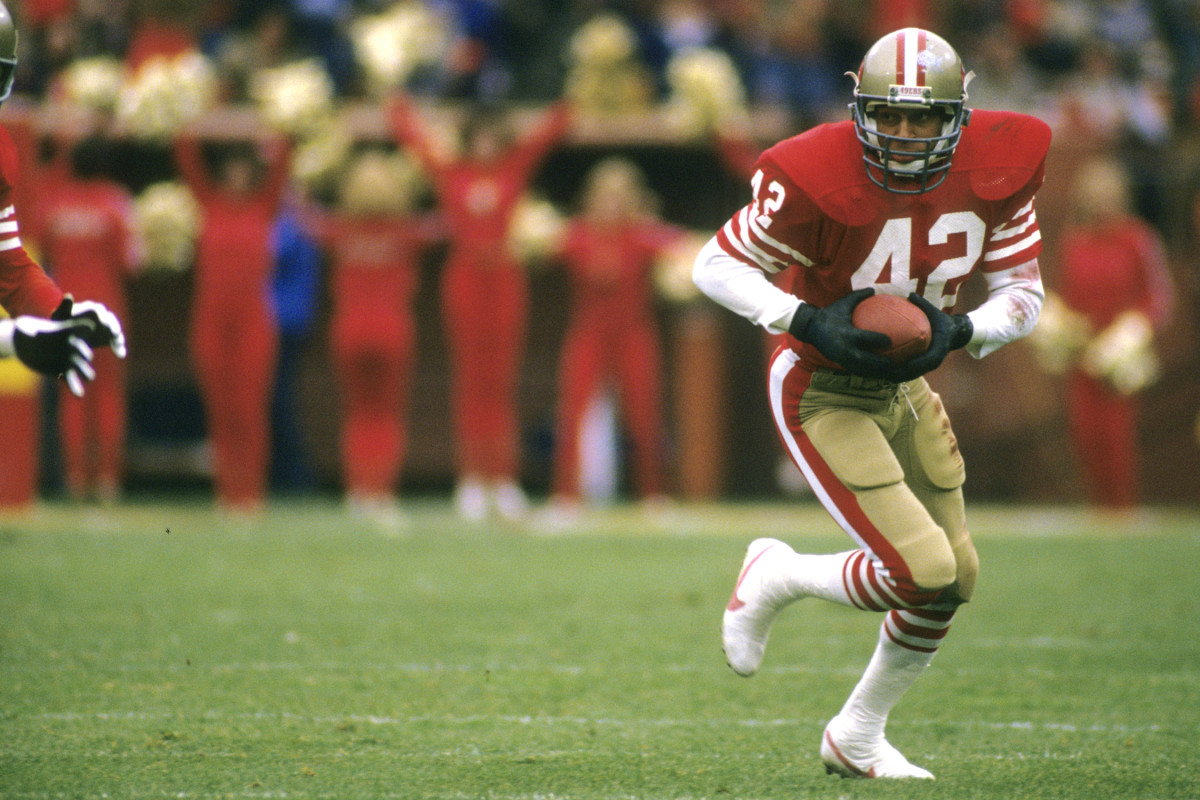
8. Team Horrigan: Deacon Jones, DE
It would be interesting to see how Jones, a master of the head-slap pass rush, would adjust to today’s rules … but there are a lot of time-and-space hypotheticals in a project such as this. Jones was a speed rusher who also brought the requisite power and effort to his attack. Again, if a quarterback isn’t the Round 1 play for a team in this draft, selecting someone who can get after opposing QBs is a smart way to go.
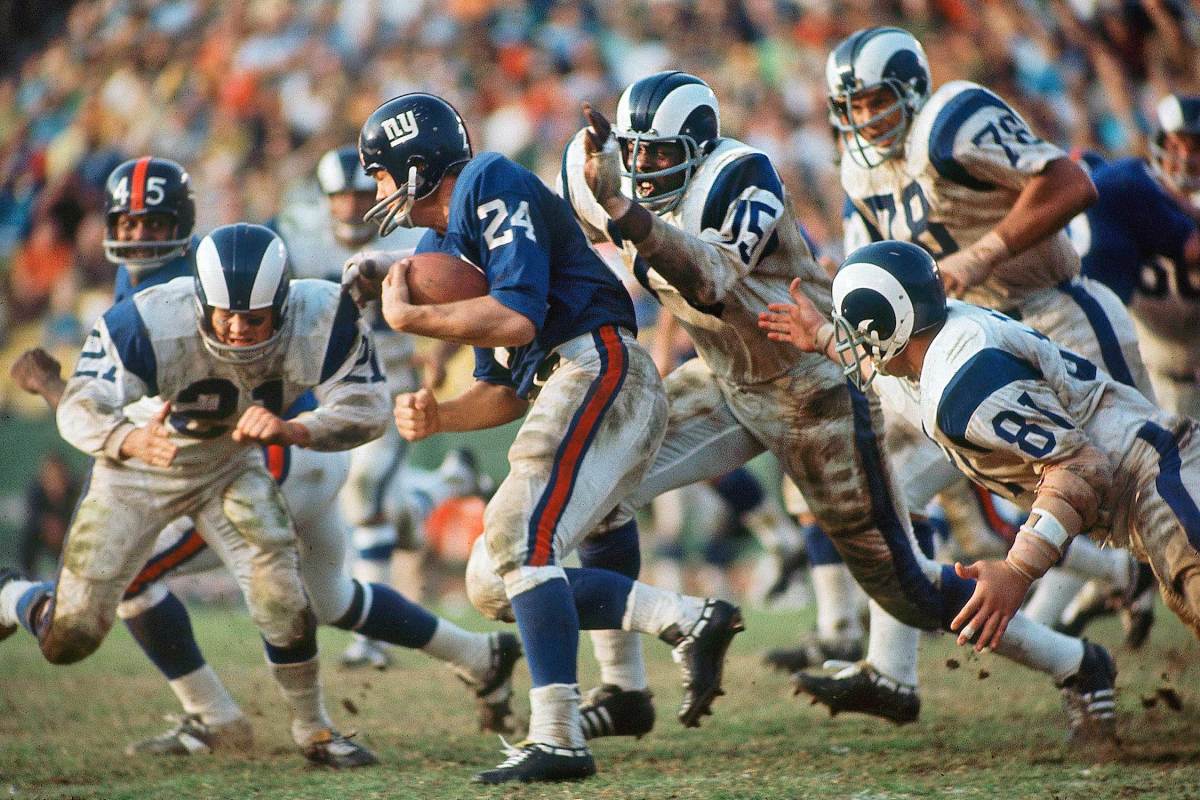
9. Team King: Dick Butkus, LB
Back in 2013, King tweeted that Butkus was his No. 2 linebacker of all time, behind only L.T. and one spot ahead of Ray Lewis. No idea if King’s draft board has changed since then—there have been no leaks from inside the war room—but Butkus absolutely belongs in the Round 1 mix. Because of his reputation as a destroyer of running backs, it can be easy to forget that Butkus offered an exceptional all-around game. He finished his career with 22 interceptions.
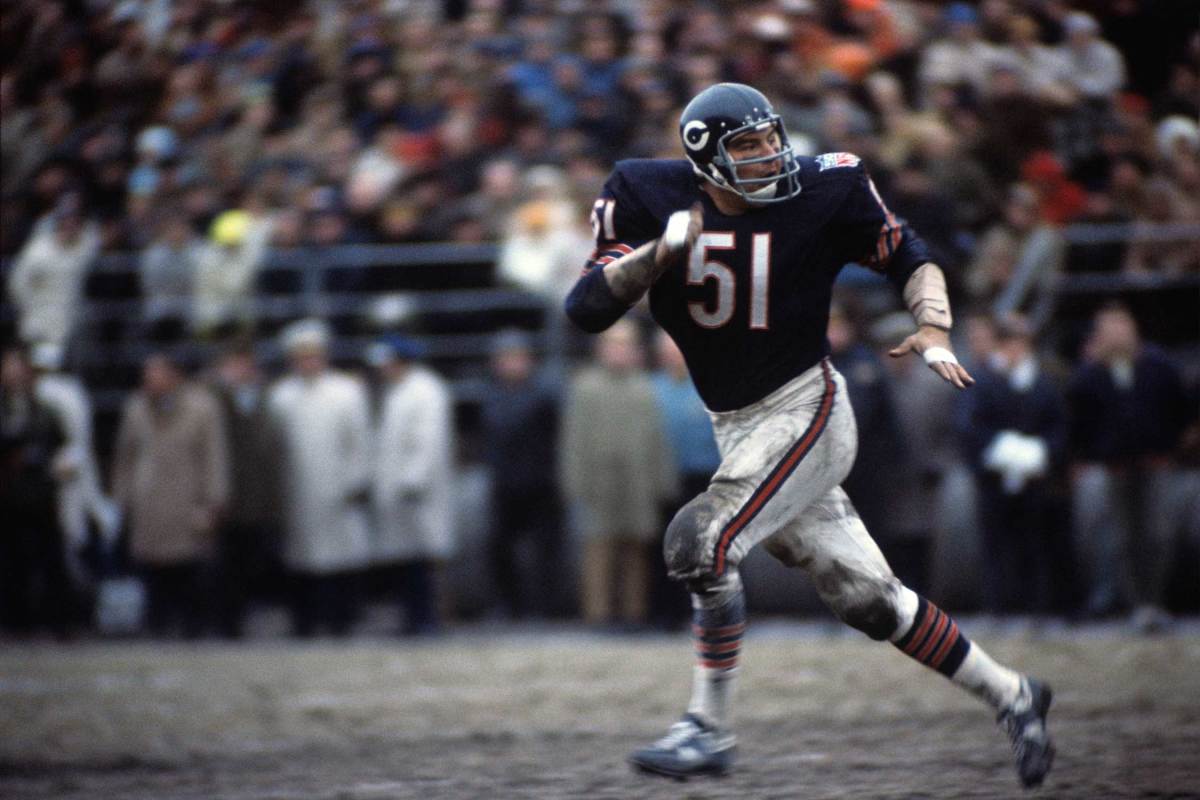
10. Team Polian: Jerry Rice, WR
This feels like a prime potential landing spot for Peyton Manning, given the success Polian and Manning enjoyed together in Indianapolis. Saving that, though—Rice at No. 10? Hurry up and get to the podium. Rice still stands as the best ever at his position, and securing a playmaker of his caliber could make it easier to wait on a quarterback. Even the 12th-best all-time QB would be able to light it up with Rice as his top target.
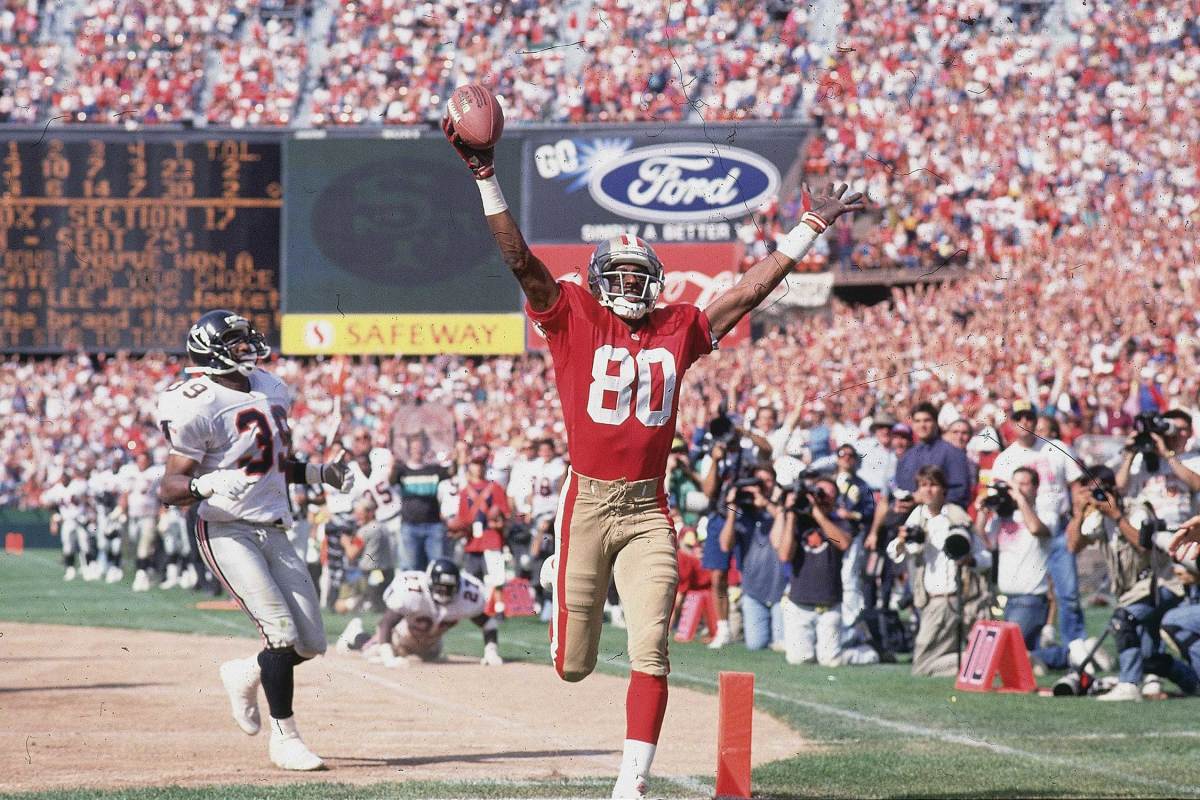
11. Team Wooten: Joe Greene, DT
Wooten was a guard for 10 seasons (he blocked for Jim Brown for seven of them), thus it wouldn’t be out of the question to see him show the interior O-line a little love here. New England’s John Hannah probably would be the pick in that case. Instead, let’s go with a player those guards and centers found borderline impossible to block. The first line of defense on the famed “Steel Curtain,” Greene would allow Wooten to build from the inside out.
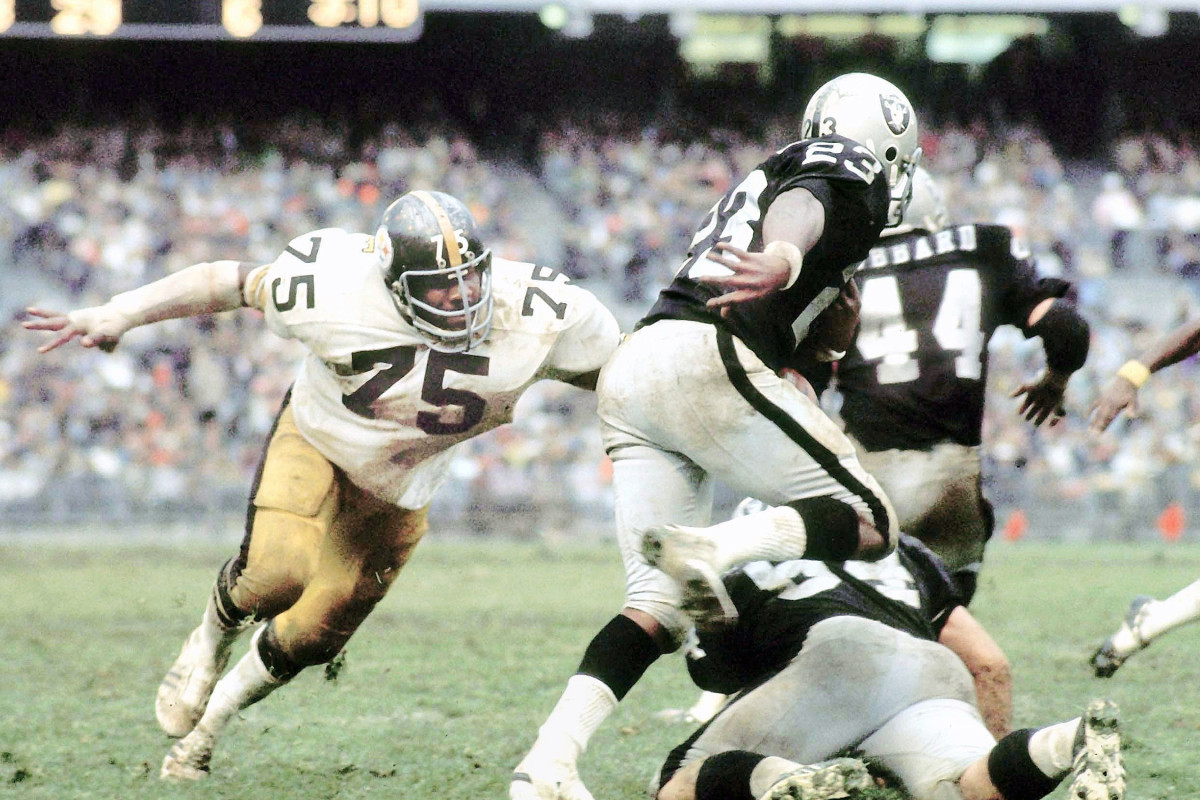
12. Team Accorsi: Johnny Unitas, QB
The tail end of Unitas’s Colts career coincided with Accorsi’s earliest days in the NFL—Accorsi was the Baltimore P.R. director when it won Super Bowl V over Dallas. Can’t get too hung on up emotional ties when drafting, but no one will complain here. Legendary NFL writer Dr. Z, Paul Zimmerman, pegged Unitas as one of two quarterbacks (along with Montana) on his all-time offense, writing, “There had been many great passers in the league ... Sid Luckman, Otto Graham, Sammy Baugh, Norm Van Brocklin ... and some QBs who showed inspirational courage. Unitas was a combination of both.”
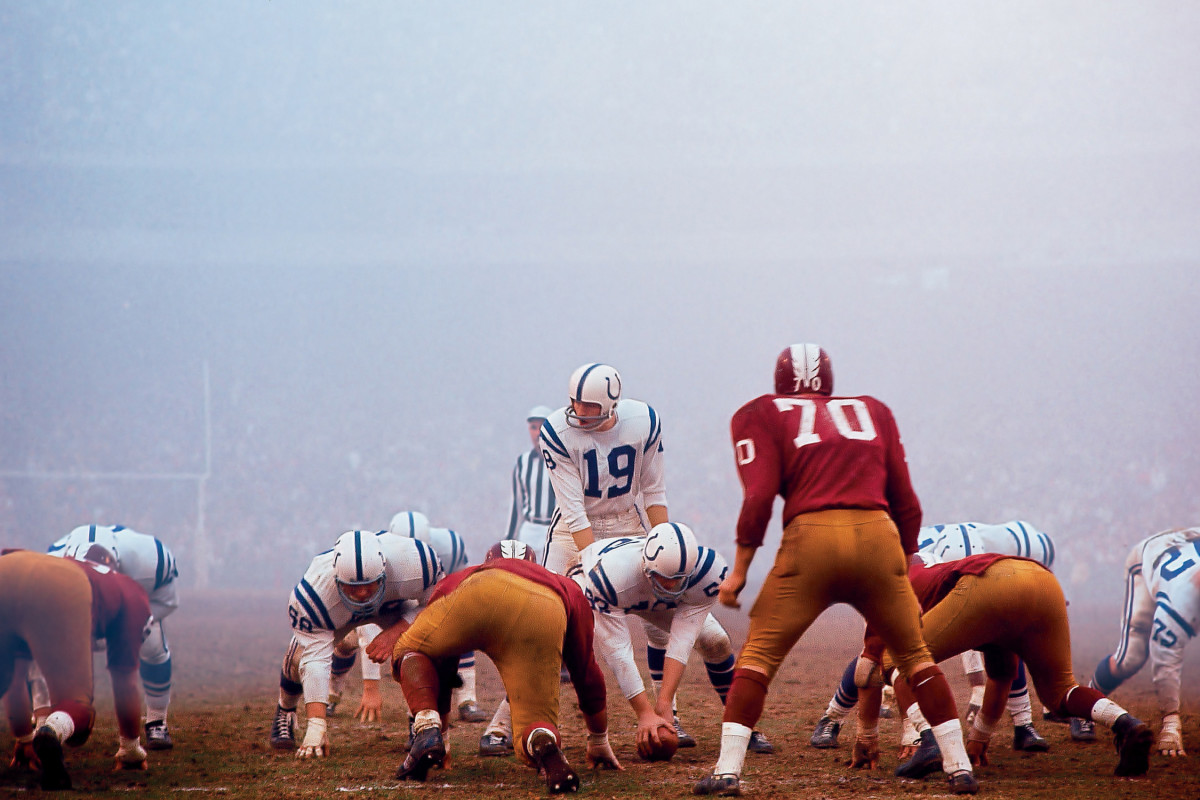
* * *
So, how did the draft play out? Check in next week, beginning with Peter King’s Monday Morning Quarterback column, for the results, plus stories and other content surrounding The MMQB All-Time NFL Draft project.
